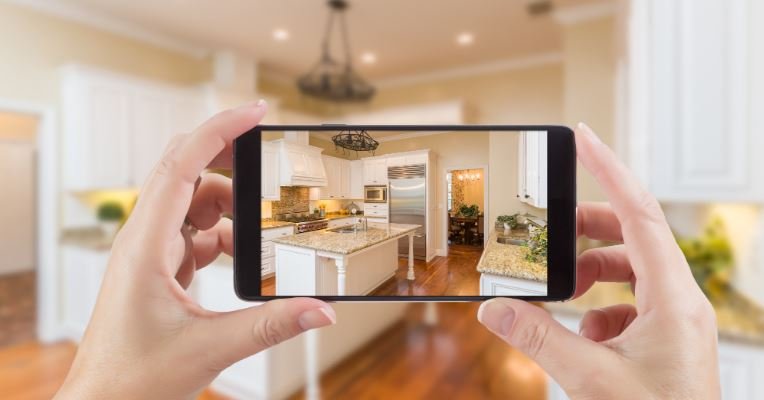Lighting is crucial for high-quality real estate photos. Avoid shooting in poorly lit conditions or using harsh artificial lighting, which can create unflattering shadows and distort colors. Instead, take advantage of natural light by shooting during the day when sunlight is abundant. If natural light is insufficient, use soft, diffused lighting sources to ensure well-lit, evenly illuminated images. Here are some of the common real estate photography errors to avoid.

Ignoring Composition and Angles
Composition and angles play a significant role in real estate photography. Avoid shooting from awkward angles or focusing solely on one part of the property. Instead, compose your shots to include key features and showcase the space effectively. Use wide-angle lenses to capture entire rooms and highlight the property’s layout. Experiment with different angles to find the most flattering perspectives that emphasize the property’s best attributes.
Overlooking Staging and Cleanliness
A cluttered or poorly staged property can detract from the quality of your photos. Ensure the property is clean, organized, and appropriately staged before taking pictures. Remove personal items, excess clutter, and distracting elements to present a polished, inviting space. Arrange furniture and decor in a way that enhances the property’s features and creates a welcoming environment for potential buyers.
Using Inconsistent Editing
Inconsistent editing can negatively impact the overall quality and coherence of your property images. Avoid excessive or inconsistent adjustments that may alter the true representation of the property. Instead, apply consistent editing techniques to enhance brightness, contrast, and color balance while maintaining the property’s natural appearance. Ensure that all images follow the same style and editing standards for a cohesive presentation.
Failing to Capture Unique Features
Neglecting to capture unique features can result in missed opportunities to highlight the property’s selling points. Avoid focusing only on standard shots and include images of distinctive elements such as custom cabinetry, high-end appliances, or scenic views. Close-up shots of these features can attract potential buyers by showcasing what makes the property stand out.
Overlooking Exterior Shots
Focusing solely on interior shots can give an incomplete picture of the property. Don’t overlook exterior shots, including the front and back yards, landscaping, and any outdoor amenities. Exterior images provide potential buyers with a comprehensive view of the property and its surroundings, offering a complete perspective on what the property has to offer.
Ignoring the Use of a Tripod
A tripod is essential for stable, clear shots. Avoid taking photos without a tripod, especially in low-light conditions or when using slow shutter speeds. Using a tripod minimizes camera shake and ensures sharp, focused images. This equipment helps maintain image quality and prevents blurriness that can detract from the overall appeal of your photos.
Failing to Maintain Consistent Quality
Inconsistent image quality can undermine the effectiveness of your real estate photos. Avoid using different equipment or techniques that may result in varying image qualities. Instead, maintain consistency in your photography equipment, lighting, and editing practices to present a professional and unified image portfolio. Consistent quality ensures that all photos reflect the property’s features accurately and attractively.
Ignoring the Importance of Post-Processing
Post-processing is vital for enhancing the quality of your real estate photos. Avoid neglecting this step or failing to address imperfections. Use editing software to adjust brightness, contrast, and color balance, and to correct any lens distortions or flaws. Effective post-processing enhances the overall visual impact of your photos and ensures they look their best.
Neglecting to Include Contextual Shots
Contextual shots provide valuable information about the property’s surroundings and its place within the neighborhood. Avoid focusing solely on close-up shots of the property itself. Include images that show the property’s relationship to nearby amenities, views, and the overall environment. Contextual shots help potential buyers understand the property’s location and its benefits within the community.
Conclusion
Avoiding common real estate photography mistakes involves paying attention to lighting, composition, staging, and editing. Capturing unique features, exterior shots, and maintaining consistent quality are essential for creating compelling property images. Utilize a tripod, embrace post-processing, and include contextual shots to provide a comprehensive view of the property. By addressing these common pitfalls, you can enhance the effectiveness and appeal of your real estate photos.

